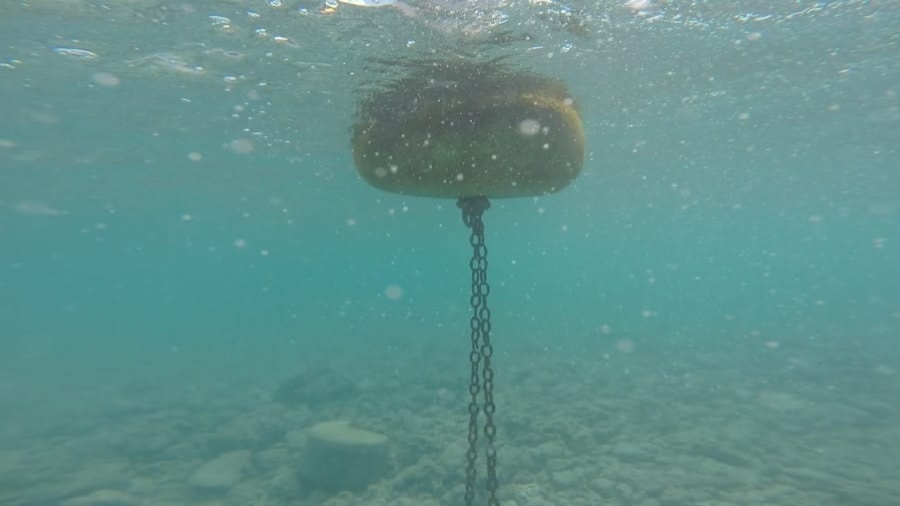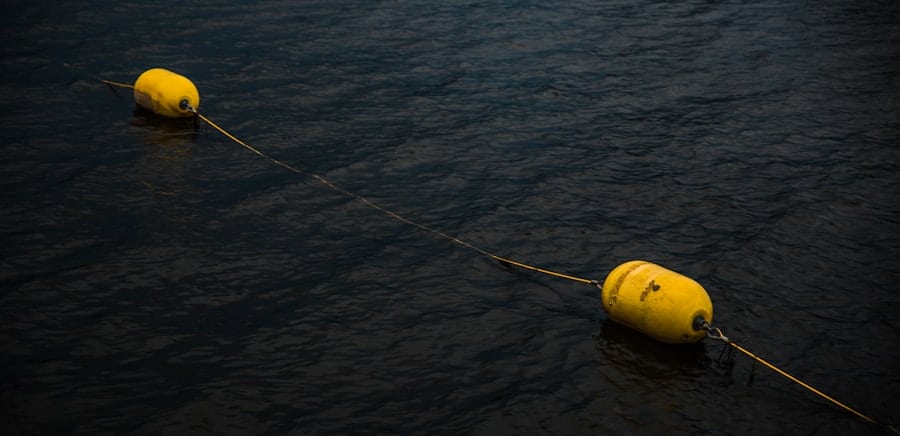The advent of underwater robots has revolutionized the field of marine conservation, providing unprecedented opportunities to explore, monitor, and protect the world’s oceans. These sophisticated machines, often referred to as remotely operated vehicles (ROVs) or autonomous underwater vehicles (AUVs), are equipped with advanced sensors and imaging technologies that allow researchers to gather data in environments that are often inaccessible to humans. The oceans cover over 70% of the Earth’s surface and harbor a vast array of biodiversity, yet they remain one of the least understood ecosystems.
Underwater robots bridge this gap by enabling scientists to conduct detailed studies of marine life, assess the health of ecosystems, and implement conservation strategies more effectively. The importance of marine conservation cannot be overstated, as human activities such as overfishing, pollution, and climate change pose significant threats to marine biodiversity. Traditional methods of monitoring and studying marine environments often involve time-consuming and costly expeditions, which can be limited by factors such as weather conditions and the physical capabilities of researchers.
Underwater robots mitigate these challenges by providing a reliable means of data collection that can operate in harsh conditions and reach depths that are otherwise unreachable. As technology continues to advance, the role of underwater robots in marine conservation is expected to expand, offering new insights into the complexities of ocean ecosystems.
Key Takeaways
- Underwater robots play a crucial role in marine conservation by providing access to hard-to-reach areas and collecting data for research and monitoring purposes.
- Current applications of underwater robots in marine conservation include habitat mapping, biodiversity assessment, pollution monitoring, and marine archaeology.
- Advancements in underwater robot technology, such as improved maneuverability, longer battery life, and enhanced sensors, have expanded their capabilities in marine conservation efforts.
- Challenges and limitations of underwater robots in marine conservation include high costs, limited operational depth, and potential impact on marine life.
- Potential future applications of underwater robots in marine conservation include autonomous data collection, deep-sea exploration, and targeted intervention for invasive species and marine debris removal.
Current Applications of Underwater Robots in Marine Conservation
Underwater robots are currently employed in a variety of applications that significantly contribute to marine conservation efforts. One prominent use is in the monitoring of coral reefs, which are among the most biodiverse ecosystems on the planet but are also highly vulnerable to environmental changes. ROVs equipped with high-resolution cameras and sensors can capture detailed images and videos of coral structures, allowing scientists to assess their health and identify signs of bleaching or disease.
For instance, researchers have utilized ROVs to map coral cover and monitor changes over time, providing critical data that informs conservation strategies aimed at protecting these vital habitats. Another significant application is in the study of marine species populations. AUVs can be deployed to track the movements and behaviors of various marine animals, including fish, sea turtles, and marine mammals.
By collecting data on their distribution and migration patterns, scientists can better understand the impacts of human activities on these species and develop targeted conservation measures. For example, underwater robots have been instrumental in studying the migratory routes of endangered species like the leatherback sea turtle, providing insights that help shape protective regulations in critical habitats.
Advancements in Underwater Robot Technology
The technological advancements in underwater robotics have been remarkable over the past few decades. Modern underwater robots are now equipped with sophisticated navigation systems, enhanced imaging capabilities, and improved energy efficiency. Innovations such as sonar mapping technology allow AUVs to create detailed three-dimensional maps of the seafloor, revealing underwater topography and habitats that were previously unknown.
This capability is particularly valuable for identifying areas that require protection or restoration. Moreover, advancements in battery technology have significantly extended the operational range and duration of underwater robots. For instance, lithium-ion batteries have replaced older power sources, enabling AUVs to conduct longer missions without needing frequent recharging.
This increased endurance allows for more extensive data collection during a single deployment, which is crucial for comprehensive assessments of marine environments. Additionally, improvements in materials science have led to the development of lighter and more durable components, enhancing the robots’ ability to withstand extreme pressures and corrosive saltwater conditions.
Challenges and Limitations of Underwater Robots in Marine Conservation
Despite their numerous advantages, underwater robots face several challenges and limitations that can hinder their effectiveness in marine conservation efforts. One significant challenge is the complexity of operating in underwater environments. Factors such as strong currents, varying water temperatures, and low visibility can complicate navigation and data collection.
For example, ROVs may struggle to maintain stability in turbulent waters, leading to potential data inaccuracies or loss of equipment. Another limitation is the high cost associated with developing and deploying underwater robots. While prices have decreased over time due to advancements in technology and increased competition among manufacturers, high-quality ROVs and AUVs still represent a significant investment for research institutions and conservation organizations.
This financial barrier can restrict access to these tools for smaller organizations or those operating in developing countries, limiting their ability to engage in effective marine conservation initiatives.
Potential Future Applications of Underwater Robots in Marine Conservation
Looking ahead, the potential applications of underwater robots in marine conservation are vast and varied. One promising area is the use of these technologies for habitat restoration efforts. For instance, underwater robots could be employed to assist in coral reef restoration by planting coral fragments or monitoring the success of restoration projects over time.
By automating these processes, researchers could increase efficiency and reduce labor costs while ensuring that restoration efforts are based on accurate data. Additionally, underwater robots could play a crucial role in combating illegal fishing practices. Equipped with advanced surveillance technologies such as sonar and video cameras, these robots could monitor fishing activities in protected areas and provide real-time data to enforcement agencies.
This capability would enhance compliance with fishing regulations and help protect vulnerable species from overexploitation. Furthermore, as climate change continues to impact marine ecosystems, underwater robots could be instrumental in monitoring changes in ocean chemistry and temperature, providing critical data for understanding how these shifts affect marine life.
Integration of Artificial Intelligence and Underwater Robots
The integration of artificial intelligence (AI) with underwater robotics represents a significant leap forward in marine conservation efforts. AI algorithms can analyze vast amounts of data collected by underwater robots, identifying patterns and anomalies that may not be immediately apparent to human researchers. For example, machine learning techniques can be employed to classify different species based on visual data captured by ROVs or AUVs, streamlining the process of biodiversity assessment.
Moreover, AI can enhance the autonomous capabilities of underwater robots, allowing them to make real-time decisions based on environmental conditions. This autonomy is particularly beneficial for long-duration missions where human oversight may not be feasible. For instance, an AUV equipped with AI could adjust its course based on detected obstacles or changes in water currents, optimizing its path for data collection without requiring constant human intervention.
This level of sophistication not only improves efficiency but also expands the potential for conducting complex studies over larger areas.
Collaboration between Scientists and Engineers in Developing Underwater Robots
The development of effective underwater robots for marine conservation relies heavily on collaboration between scientists and engineers.
For example, marine biologists may identify key parameters that need to be measured during underwater surveys, such as water temperature or salinity levels, which engineers can then incorporate into the robot’s sensor suite.
Conversely, engineers bring expertise in robotics design and technology development that is essential for creating functional and reliable underwater vehicles. This interdisciplinary collaboration fosters innovation by combining domain knowledge from both fields. Successful projects often result from joint efforts where scientists articulate their research goals while engineers propose feasible technological solutions.
Such partnerships have led to breakthroughs in robot design that enhance their capabilities for specific conservation tasks, ultimately contributing to more effective marine management strategies.
Ethical Considerations in Using Underwater Robots for Marine Conservation
As with any technological advancement, the use of underwater robots in marine conservation raises important ethical considerations that must be addressed. One primary concern is the potential impact these machines may have on marine ecosystems themselves. While underwater robots are designed to minimize disturbance during data collection, there is still a risk that their presence could disrupt sensitive habitats or wildlife behaviors.
For instance, the noise generated by ROVs may affect marine mammals that rely on echolocation for communication and navigation. Additionally, ethical questions arise regarding data ownership and access. As underwater robots collect vast amounts of information about marine environments, it is crucial to establish clear guidelines regarding who owns this data and how it can be used.
Ensuring equitable access to data is essential for fostering collaboration among researchers globally while also protecting sensitive information about endangered species or critical habitats from exploitation.
As technology continues to evolve, so too must our approach to integrating these tools into sustainable marine management strategies that prioritize both ecological integrity and scientific advancement.
In a recent article discussing The Future of Underwater Robots in Marine Conservation, it is important to consider the advancements in technology that have enabled these robots to play a crucial role in protecting our oceans. One related article that delves into the world of technology is a comprehensive guide on the best software for 3D animation, which can be found here. This software is essential for creating realistic simulations of underwater environments and marine life, allowing researchers to better understand and conserve our oceans.
FAQs
What are underwater robots?
Underwater robots, also known as autonomous underwater vehicles (AUVs) or remotely operated vehicles (ROVs), are unmanned vehicles designed to operate underwater without direct human control.
How are underwater robots used in marine conservation?
Underwater robots are used in marine conservation for various purposes, including monitoring marine life, mapping the seafloor, studying ocean currents, and conducting research on marine ecosystems.
What are the benefits of using underwater robots in marine conservation?
Using underwater robots in marine conservation allows researchers to access remote and deep-sea environments, collect data without disturbing marine life, and conduct long-term monitoring of marine ecosystems.
What are some challenges in the use of underwater robots in marine conservation?
Challenges in the use of underwater robots in marine conservation include technical limitations, such as battery life and communication range, as well as the high cost of equipment and the need for specialized training to operate and maintain the robots.
What is the future outlook for underwater robots in marine conservation?
The future of underwater robots in marine conservation looks promising, with advancements in technology leading to more efficient and capable robots. These advancements will likely lead to increased use of underwater robots in marine research and conservation efforts.



